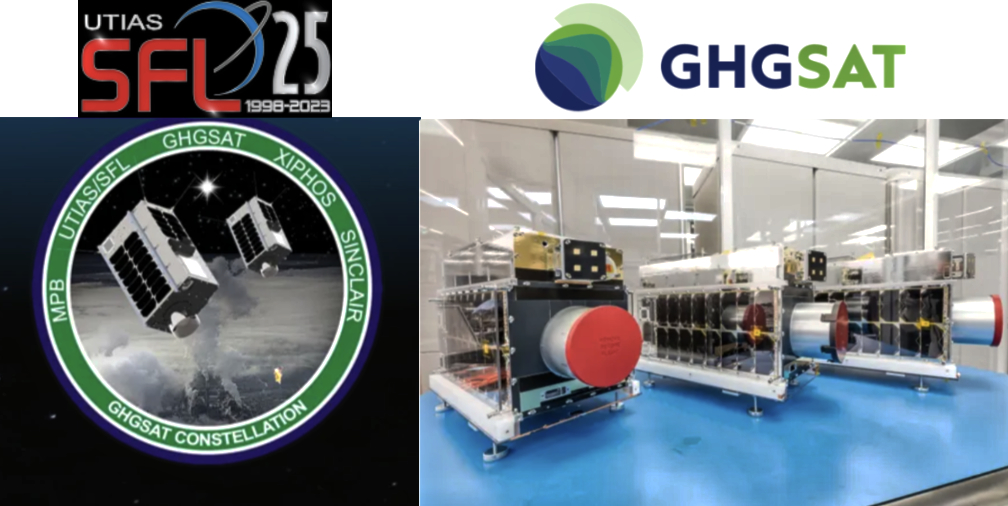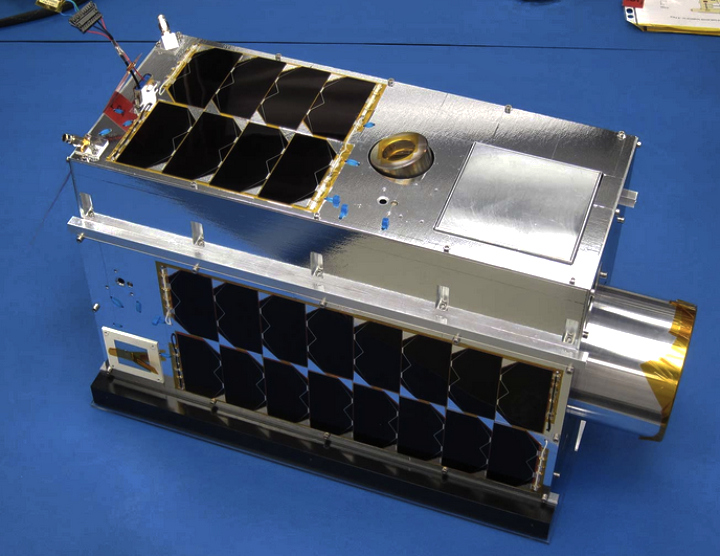
Space Flight Laboratory (SFL) has announced that the SFL-built GHGSat greenhouse gas monitoring smallsats have achieved sustained detection and measurement of methane emissions at double the design capacity of the satellites — under contract to GHGSat, SFL developed all nine, operational, 15 kilogram GHGSat spacecraft on the firm’s NEMO smallsat bus.

In addition, the GHGSat-D demonstration satellite, CLAIRE, developed by SFL and launched in 2016, has exceeded operational design life by more than two years. The eight, commercial satellites, GHGSat-C1-C8, launched individually and in clusters since 2020, are in excellent health.

GHGSat detects and measures greenhouse gas emissions from industrial sources on the Earth’s surface from space. The Montreal company provides their monitoring services commercially to industries that include oil and gas, power generation, mining, waste management, and agriculture.
GHGSat selected SFL to develop the CLAIRE demo mission due in part to the company’s expertise in implementing advanced attitude control and stability technologies that enable smaller spacecraft to accurately point sensors at targets on the ground. With the demand of attitude and tracking performance that was rare in satellites of that size, this capability was crucial to GHGSat’s mission objectives.
Attitude control is just one of several technological factors contributing to the better-than-anticipated collection capacity of the GHGSat microsatellites, explained SFL director Dr. Zee. SFL incorporates robust design margins into every satellite, and these include the onboard power systems, data storage, and downlink capacities. These margins on-orbit translate into better operations and longer missions.
SFL’s 25-year heritage includes 70 operational successes totaling 265 cumulative years in orbit, with an additional 26 satellites under development or awaiting launch. SFL offers a complete suite of nano-, micro- and small satellites – including high-performance, low-cost CubeSats – that satisfy the needs of a broad range of mission types from 3 to 500 kilograms. These missions relate to EO, atmospheric monitoring, ship tracking, communication, radio frequency (RF) geolocation, technology demonstration, space astronomy, solar physics, space plasma, and other scientific research.
“The SFL-built satellites have exceeded our expectations regarding technological performance. Each satellite is now making twice as many emission measurements per day as originally planned. This performance has enabled us to push our monitoring capability further, helping more clients better understand and reduce their emissions.” — Stephane Germain, President, GHGSat
“SFL is pleased to play an important role in GHGSat’s global success by developing its core company-owned satellite assets. At SFL, we take pride in building affordable small satellites that outperform – often exceeding operational specifications and outlasting their design lives.” — Dr. Robert E. Zee, Director, SFL
